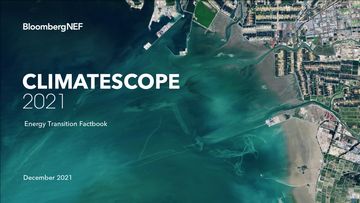Thailand
With a cumulative score of 1.7, Thailand ranks number 27 among emerging markets and number 56 in the global ranking.
- Emerging markets
- Asia-Pacific
1.87 / 5
Power score
1.31 / 5
Transport score
Buildings score
Only 56 markets (28 emerging markets) are scored on the Buildings sector. See the full list on the methodology page.
Low-carbon strategy
Net-zero goal and strategy
Thailand is yet to adopt a long-term net zero goal or decarbonization strategy. The government aims to finalize a roadmap to decarbonize the economy by the end of 2021.
Nationally Determined Contributions (NDC)
Thailand aims to reduce its greenhouse gas emissions by 20% from a business-as-usual scenario by 2030 under its Nationally Determined Contribution submitted to the United Nations.
Fossil fuel phase-out policy
There is no fossil fuel phase-out policy in Thailand.
Power
Power policy
Thailand achieved 100% electrification in 2014. In the 2018 Power Development Plan, total electricity demand is forecast to increase at an average growth rate of 3.2% over the period 2018-36. Average demand growth is estimated to be 3.9% during 2019-22 and 3% during 2023-37.
Thailand was the first country in Southeast Asia to implement a feed-in premium to spur investments in renewable energy projects. The generous feed-in premium and subsequent feed-in tariff programs implemented by the government supported the growth of the renewables industry.
Power policies
Power prices and costs
Thailand's retail tariffs consist of a base tariff that is reviewed every three to five years and an adjustment tariff component that is reviewed every four months. The adjustment tariff reflects changes in fuel costs, electricity purchase cost and the impact of government policies.
The costs of various renewable energy schemes are passed through to retail consumers and have contributed to an increase in retail tariffs over the years. Compared to neighboring countries such as Malaysia and Vietnam, retail tariffs in Thailand are higher.
Power market
Thailand's power market is partially liberalized, with the generation sector open to private players. State-owned utility Electricity Generating Authority of Thailand (EGAT) is the sole offtaker of all generated electricity. The introduction of Small Power Producers (SPPs) and Very Small Power Producers (VSPPs) promoted the decentralization of power generation using renewable energy.
Installed Capacity (in MW)
Electricity Generation (in GWh)
Utility privatisation
Which segments of the power sector are open to private participation?
Wholesale power market
Does the country have a wholesale power market?
Doing business and barriers
In 2020, renewables, including large hydro, accounted for 26% of domestic power generation capacity and 14% of domestic electricity generation. Natural gas is still the backbone of Thailand’s power system, accounting for 65% of domestic electricity generation in 2020. In addition to domestically generated power, Thailand also imported about 5.7GW of power from neighboring countries like Laos.
The investment climate in Thailand is stable. There are no known defaults by the single offtaker, EGAT. The grid in Thailand is also relatively robust, with few instances of supply interruptions and no known curtailment. There are no barriers to entry in the form of foreign ownership restrictions or local content requirements.
Currency of PPAs
Are PPAs signed in or indexed to U.S. Dollars or Euro?
Bilateral power contracts
Can a C&I (Commercial and Industrial) customer sign a long-term contract (PPA) for clean energy?
Bilateral power contracts
Can a C&I (Commercial and Industrial) customer sign a long-term contract (PPA) for clean energy?
Fossil fuel subsidies
Does the government influence the wholesale price of fossil fuel (used by thermal power plants) down through subsidies?
Fossil fuel taxes
Does the government influence the wholesale price of fossil fuel (used by thermal power plants) up through taxes?
Bilateral power contracts
Can a C&I (Commercial and Industrial) customer sign a long-term contract (PPA) for clean energy?
Transport
EV market
Thailand is the largest market for electric vehicles in Southeast Asia currently. Electric vehicles sales in the country surged from less than 500 in 2015 to over 7,200 in 2020. Tax breaks offered by the government to manufacturers helped increase the sales of plug-in hybrid electric vehicles (PHEV) from luxury brands like Mercedes-Benz and BMW since 2015.
Battery electric vehicle (BEV) sales rose to almost 1,300 in 2020 from about 100 in 2018. Some 1,600 electric two-wheelers were also sold in Thailand in 2020. There were over 2,100 passenger BEVs, 22,700 passenger PHEVs and 3,100 electric two-wheelers in Thailand’s vehicle fleet in 2020.
EV policy
Thailand is also the largest vehicle manufacturing hub in Southeast Asia and the government is looking to promote the local manufacturing of electric vehicles. The Thai government aims to have at least 30% of all vehicles manufactured locally in 2030 to be hybrids, plug-in hybrids, battery electrics or fuel cell vehicles.
Thailand does not currently offer direct purchase subsidies for electric vehicles. However, the government is offering discounts on the excise duty and the annual road tax for BEVs. Manufacturers setting up factories in Thailand to manufacture EVs also receive several tax discounts for the investments they make.
Transport policies
Fuel economy standards
Does the country have a fuel economy standard in place?
Buildings
Buildings market
Thailand’s 20-year Energy Efficiency Development Plan (EEDP) (2011-2030) aims to reduce energy intensity of the economy by 25% in 2030 compared to 2005. The country has also defined the Minimum Energy Performance Standards for appliances and buildings, which came into effect in 2021.
Energy performance standards
Are there minimum energy performance standards for buildings?
Energy efficiency plan
Does the country have a national energy efficiency plan?
Buildings policy
The government has yet to implement any substantive policy support in this sector and the low-carbon heat market remains at an early stage.

